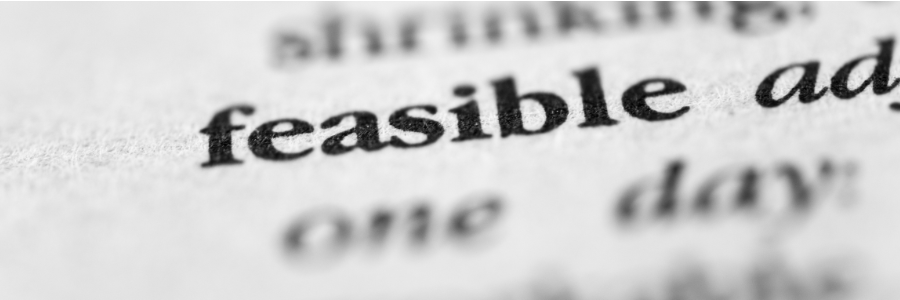Link: Appendix A – Feasibility Study
What is a Feasibility Study?
A feasibility study is an evaluation of a proposed project or venture to determine its potential for success. A feasibility study for the USDA Business and Industry (B&I) Loan Program would involve analyzing the potential for the proposed project to be successful and financially viable, as well as its alignment with the goals and objectives of the B&I Loan Program. These reports must be completed by a qualified third party and will usually take 30-45 days to completed. The report could take longer to complete if there are several major revenue lines from different industry classifications. A feasibility study will not replace a business plan because a business plan will include detailed information on the operations.
Which projects require a feasibility study?
Any project that is a new business, expansion, or acquisition with no historical Debt Service Coverage require a feasibility study. When a project is for the refinance of debt and historical coverage does not exist for the proposed debt, approval will be difficult.
What is required to complete a Feasibility Study?
To complete a feasibility study for the USDA B&I Loan Program, you could follow these steps:
- Identify the purpose and objectives of the proposed project. This includes understanding the needs and goals of the business or organization, and determining how the project would address those needs and achieve those goals.
- Conduct market research. This includes identifying the target market for the project, assessing the competition, and determining the potential demand for the product or service.
- Develop a financial plan. This includes estimating the costs of the project, projecting the expected revenue, and determining the potential profitability of the project.
- Assess the technical feasibility. This includes evaluating the technical requirements of the project and determining whether the necessary resources and expertise are available to complete the project.
- Evaluate the environmental impact. This includes assessing the potential environmental impacts of the project and determining whether the project complies with relevant regulations and standards.
- Analyze the risks and benefits. This includes identifying and evaluating the potential risks and benefits of the project, and determining how to mitigate or manage those risks.
- Management determination. This part of the report includes a detailed analysis of the proposed manager(s) skills and experiences and if they correlate to the project.
- Prepare a report. This includes summarizing the findings of the feasibility study and making recommendations for moving forward with the project.
Final Words and Thoughts!
It is important to note that the feasibility study is only one step in the process of applying for a USDA B&I Loan. If the feasibility study indicates that the project is viable and aligns with the goals and objectives of the B&I Loan Program. Note the OneRD regulations include an appendix detailing the requirements of a feasibility study. You can find a link to the Appendix above.
Projects which have several revenue lines like a winery with event center and wedding venue, multiple feasibility studies will be needed for each unique major revenue line.
Lastly, make sure you are contracting with a firm that UNDERSTANDS the USDA Loan program and their requirements. Starting with the right third party will save lots of time and money. In the future, ill update this post below with Feasibility Study providers that I have reviewed and recommend.
